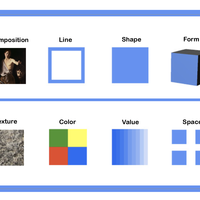Death! Famine! War! Plague! Apocalypse powers activate!
At this point, you probably know them more as pop culture references, but back in the day, the Four Horsemen of the Apocalypse were perceived as a legitimate threat for an ever growing society.
These were obviously different times. It was an era of religious expansion and everyone was drinking the Kool-Aid. One thing was as true then as it is now, though: We fear death. Call it human nature, or the understanding that deep down we’re all lowkey trash, but the threat of the end times has always been something that we’ve collectively worried about. The Four Horsemen of the Apocalypse just happened to be how everyone (Christians that is) thought it was all gonna go down. But it’s not always pertaining to a particular religion, and it’s not always constant. There’s an ebb and a flow to it. We don’t run around like chickens with our heads cut off every day (Well, maybe in 2019 we do), there’s usually a formula to the madness. The notion of our impending doom usually starts to rear its ugly head around times of change. I’ve witnessed a few in my lifetime alone. Because of the new millennium, people thought that computers were gonna blow up and planes were gonna fall out of the sky. Then in 2012, the world was supposed to end on the Winter Solstice according to the ominous Mayan calendar. And let’s not forget the 2016 election. The aftermath of which sparked many to believe that it was the beginning of the end. The jury’s still out on that one, though.
The dawn of the 1500s was no different. The world was about to enter a new century and religious tensions and rumors of war had people on edge. That’s what sparked the creation of German artist Albrecht Dürer’s Apocalypse series, and more specifically, The Four Horsemen of the Apocalypse. The image of the death bringers would probably be enough to freak anyone out at the time, but Dürer takes it a step further. Take a look at the first two horsemen on the right. It’s not the weapons they wield that strike the most fear, it’s what’s on their heads. Their hats look very reminiscent to what the Turkish invaders wore at the time. Turkey was about that life back in the day. They held the world hostage with the fear the Turks attack them next. So naturally, referencing this infamous group was a way that Dürer made the violent scene on display feel much more like a prophecy of things to come instead of just a piece of art. Dürer’s audience would see these helpless souls—people that looked like them— trampled by dudes with the same get up of those they feared in real life. Homie was a savage.
But his mastery wasn’t just limited to his creative expression within the themes of his art. Dürer was a beast in revolutionizing the whole woodcutting process, the practice that was used to create this image. Dude had so much smoke that he inspired other greats like Lucas Cranach and Hans Holbein to follow in his footsteps. Woodcutting is kind of an early version of a stamp, but more specifically, it’s like the great grandfather of the modern printer. Basically, artists would carve out their hopeful pictures in meticulous detail. For the Four Horsemen, the white represents the deep cuts, while the black is the layer left intact. This picture is almost equal parts black and white, so you can just imagine how much teeny tiny hacking Dürer had to do to get something with this much detail as the finished product. It was worth it in the end, though. It really enhances the reality that he set forth to convey.
The apocalypse powers never activated to the potential displayed in this picture. But Dürer’s attention to detail, and ability to effectively bring to life the fears of so many are both big reasons why The Four Horsemen of the Apocalypse are still so relevant today. You could say that originating from a section in the #1 best-selling book of all time could have something to do with it too, but give this man his due!




















I like this painting because it only uses black and white tones.